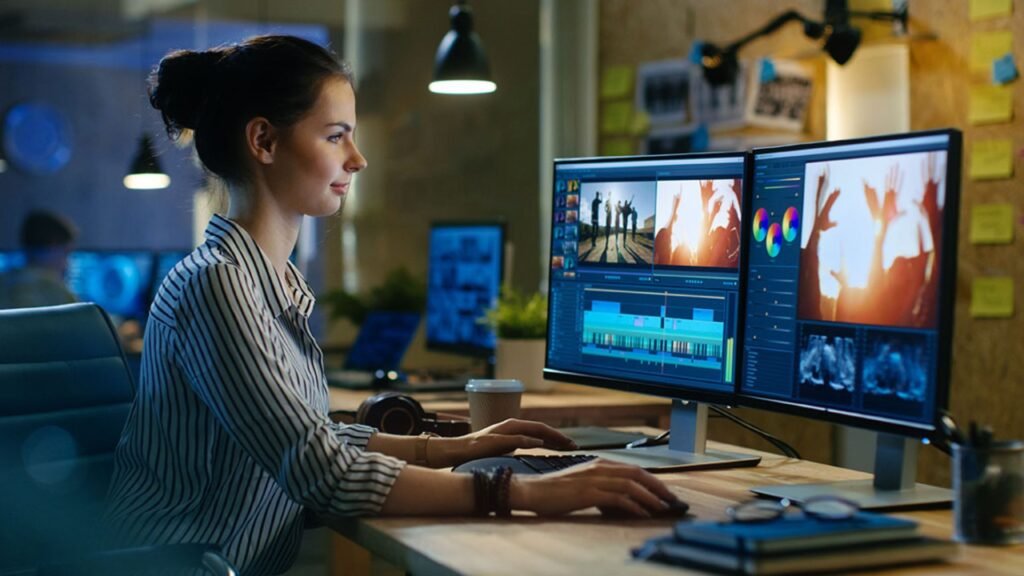Computer graphics (CG) have revolutionized the film industry, transforming how stories are told and visualized. Whether it’s bringing fantastical creatures to life, creating immersive environments, or enhancing dramatic scenes with visual effects, CG plays a vital role in modern filmmaking. It allows filmmakers to push the boundaries of imagination, delivering experiences that were once impossible with traditional techniques. In this article, we’ll explore why computer graphics matter in film production and how they have become an essential tool for filmmakers and visual artists alike.

Enhancing Visual Storytelling
At the core of filmmaking is storytelling, and computer graphics help enhance this by visually representing elements of the story that would otherwise be difficult or impossible to capture with traditional methods. Whether it’s depicting imaginary creatures, vast otherworldly landscapes, or complex action scenes, CG allows filmmakers to create compelling narratives that captivate audiences.
Example:
- In Avatar, James Cameron used advanced CGI to create the alien world of Pandora, an environment that was essential to the storytelling. Without CG, such a visually rich and dynamic world would not have been possible.
CG enables directors and visual artists to materialize their creative vision, ensuring that the narrative unfolds in the most captivating way possible.
Bringing Fantastical Creatures and Characters to Life
One of the most significant uses of computer graphics in film production is the creation of lifelike or fantastical characters that can’t be physically portrayed. Characters like Gollum in The Lord of the Rings, the Hulk in the Avengers franchise, or the numerous dinosaurs in Jurassic Park are all products of CGI. These characters could never be realistically achieved with practical effects alone.
How It Works:
- Motion Capture: Advanced motion capture technology allows actors’ movements and expressions to be captured and translated into CGI characters. This results in incredibly lifelike performances from digital characters.
- Realism in Detail: CGI allows for intricate detail in creature design, from skin textures to the subtle movements that give them life, enhancing their believability on screen.
These innovations allow filmmakers to create characters that transcend the limitations of traditional acting, providing audiences with experiences that engage both visually and emotionally.
Creating Immersive Environments
Many films, especially in the science fiction and fantasy genres, feature locations and worlds that do not exist in reality. Computer graphics make it possible to create entire environments that feel authentic and immersive, from alien planets to futuristic cities.
Example:
- In Blade Runner 2049, CGI was used to create the vast, dystopian cityscapes and otherworldly environments, blending real-world shots with digitally constructed settings seamlessly.
Without CGI, many of these intricate worlds would either be impossible to create or would require expensive, time-consuming practical effects. CG offers filmmakers the flexibility to construct detailed environments with precision, allowing them to transport audiences to entirely new worlds.
Visual Effects and Action Sequences
Action sequences, particularly those involving explosions, car chases, or large-scale battles, often require the use of computer graphics to achieve realism while maintaining safety. CGI allows for the creation of complex visual effects (VFX) that elevate the intensity and excitement of these scenes.
Benefits:
- Safety: Instead of putting actors in dangerous situations, CG allows action sequences to be staged in virtual environments, ensuring the safety of everyone involved.
- Precision: CGI allows filmmakers to control every aspect of an action sequence, from the movement of objects to the placement of explosions and visual effects, ensuring that the scene plays out exactly as envisioned.
Films like Mad Max: Fury Road or The Matrix trilogy showcase the power of computer-generated imagery in crafting action sequences that are visually thrilling and logistically feasible.
Conclusion
Computer graphics have become an indispensable tool in modern film production. From enhancing storytelling to creating lifelike characters, environments, and thrilling action sequences, CGI allows filmmakers to bring their creative visions to life in ways that were once unimaginable. As technology continues to advance, the role of computer graphics in filmmaking will only become more central, further enhancing the cinematic experience for audiences worldwide.




